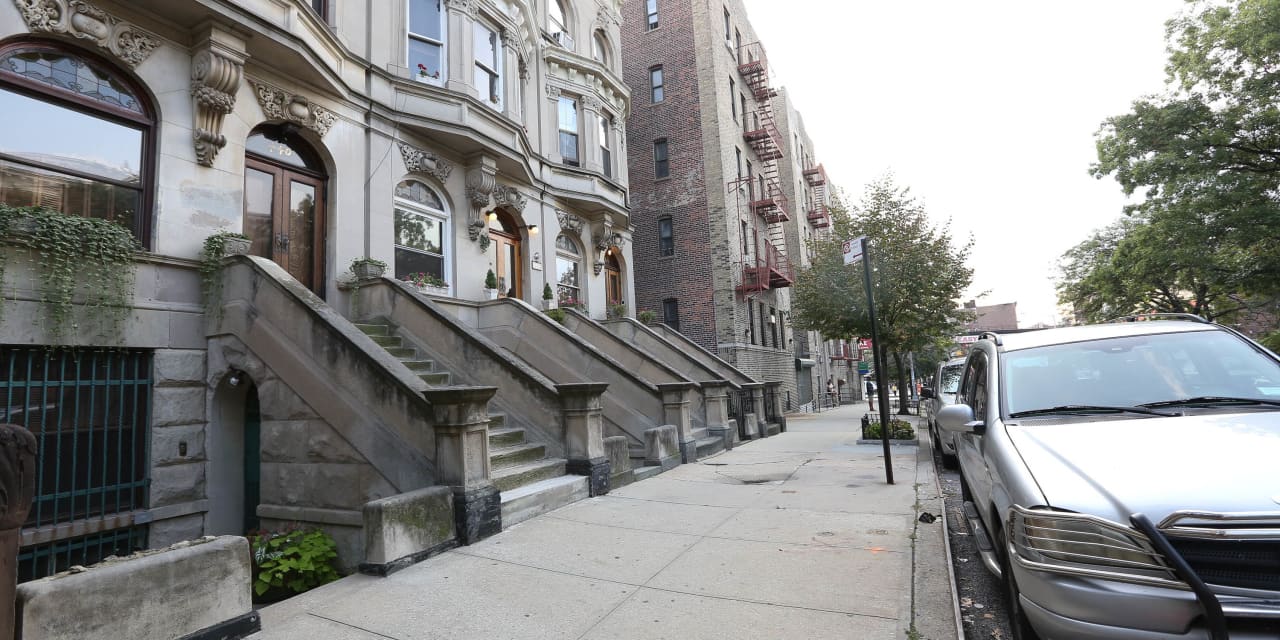Britons will get a tax break to encourage investment in the London stock market, the U.K. government said as it set out a spring budget that also cut workers’ employment taxes, as the Conservative party looked to boost its election hopes.
Chancellor of the Exchequer Jeremy Hunt told a packed Parliament on Wednesday that new British Individual Savings Accounts would allow an extra £5,000 in tax-free investment into U.K. equities. Rules currently allow investors to put £20,000 a year into the accounts, which are exempt from capital-gains tax.
The move is an attempt to revive the London stock market, which has been suffering from a lack of liquidity, low valuations and a scarcity of IPOs. A recent report from Calastone found that British investors are increasingly selling their U.K. holdings to purchase shares in the U.S., particularly tech stocks.
The FTSE 350
UK:NMX,
an index of large- and midcap U.K.-listed stocks, is down 2.9% over the past 12 months, whereas the S&P 500
SPX
on Wall Street is up 27.9%.
As part of the drive to encourage more investment in the London stock market, Hunt confirmed plans to introduce a new requirement that pension funds must disclose their allocations to the U.K. and said he would consider what “further action” could be taken to stimulate domestic investment by funds.
“We strongly welcome the chancellor’s announcement of a British ISA,” said Charles Hall, head of research at investment bank Peel Hunt. “It is an important initiative that should encourage saving, start to reverse the outflow from U.K. equity funds and support investment in our growth companies.”
Shares in ISA providers such as Hargreaves Lansdown
HL
and AJ Bell
AJB
rose 2.2% and 2.7%, respectively, on the news, although AJ Bell chief executive Michael Summersgill played down how much of a boost Hunt’s decision would provide the London bourse.
“Increasing investment into U.K. companies is a laudable aim, but this ill-conceived, politically motivated decision will simply not achieve that objective,” Summersgill said.
“Fifty percent of the money our customers currently invest through their stocks-and-shares ISAs is invested into U.K. assets, so this new allowance will have no impact whatsoever on their investment behavior,” he added.
Still, the FTSE 250 index
UK:MCX,
which is populated by domestically focused midcap stocks, was up 1.4% Wednesday afternoon in the U.K.
The spring budget came ahead of a U.K. election that must be held this year, with the incumbent Conservatives heading for a heavy defeat, according to polls. Capital Economics, the London-based research boutique, titled the occasion: “Jeremy Hunt goes shopping for votes.”
There were some crowd-pleasing fiscal tweaks. The most notable was a two-percentage-point cut in national insurance taxes, which according to Financial Times calculations would add £29.04 (the equivalent of $36.95) to the monthly take-home pay of someone on a £30,000 annual salary.
Hunt also extended the freeze on alcohol duty to 2025, a measure he said would support “the great British pub.” Shares of pub giant J.D. Wetherspoon
JDW
rose 2%, and smaller competitor Marston’s
MARS
added 1.9%.
Another popular measure supports reducing the cost of driving, so Hunt said he would maintain the 5-pence cut on fuel duty and freeze it for another 12 months, a move he said would save the average driver £50 next year.
In terms of spending, Hunt said the government would allocate £6 billion ($7.6 billion) in additional funding for the NHS, which included £2.5 billion to cut wait times for appointments, a particularly sore point for many Brits.
Hunt said that the government was in a position to help families with permanent tax cuts given that inflation has slowed. “Lower tax means higher growth. And higher growth means more opportunity, more prosperity and more funding for our precious public services,” he said.
The pound was little changed at around $1.2724 after the budget was delivered, though government bond yields were quite choppy, with the 10-year later trading down 1.8 basis points at 4.088%.
Concerns about extra gilt supply came after the U.K.’s debt-management office said Britain aims to sell £265.3 billion in government bonds in the 2024-25 fiscal year, higher than analysts’ forecasts of £258.4 billion, according to Reuters.
Hunt said that the Office for Budget Responsibility, the independent fiscal observer, estimated that inflation would likely fall back to the Bank of England’s 2% target in a few months’ time, a move in line with the central bank’s own forecasts.
The OBR expects the economy to grow by 0.8% this year and 1.9% next year.
Published: March 5, 2024 at 10:02 a.m. ET
Story developing. Stay tuned for updates here.
The numbers: U.S. factory orders fell 3.6% in January large due to fewer contracts for Boeing passenger planes, but there was not much sign of a broad revival among manufacturers.
Economists surveyed by the Wall Street Journal had forecast a 3.1% decline.
…
Story developing. Stay tuned for updates here.
The numbers: U.S. factory orders fell 3.6% in January large due to fewer contracts for Boeing passenger planes, but there was not much sign of a broad revival among manufacturers.
Economists surveyed by the Wall Street Journal had forecast a 3.1% decline.
If transportation is excluded, orders for manufactured goods dropped a smaller 0.8%.
Big picture: Manufacturers have struggled to achieve robust growth for the past few years because of shifting consumer spending habits and higher interest rates orchestrated by the Federal Reserve to quell inflation.
Large subsidies and incentives by the Biden administration have helped to prop up industrial spending to some extent, but manufacturers could get a boost later in the year if the Fed cuts interest rates as expected.
That could help increase business investment once borrowing costs get cheaper.
Key details: Businesses are investing plenty in new computing power, an offshoot of Bide subsidies and the budding artificial-intelligence revolution. Spending is up sharply compared to a year earlier.
All other major areas of the industrial sector are quite weak, however.
Core capital goods orders, a proxy for broader business investment, was flat in January. These orders dropped 0.6% in the prior month and are down slightly compared to a year earlier.
Shipments of manufactured goods already produced fell almost 1% and have declined in four of the past five months.
These figures are factored into gross domestic product report — the official scorecard of the U.S. economy — and suggest GDP in the first quarter might not get much help from business investment.
The Dow Jones Industrial Average
DJIA
and S&P500
SPX
fell in Tuesday trades.
New York Community Bancorp Inc. has been looking to shed problem commercial real estate from its books after last week reporting a surprising $185 million loss relating to a pair of loans as part of its fourth-quarter earnings results.
The lender has offered investors a chance to bid on a $22.4 million mortgage backed by three five-story walk-up apartment buildings in Washington Heights, a neighborhood in northern Manhattan, according to details of the offering viewed by MarketWatch.
The debt backs mostly rent-regulated apartments and affiliated mixed-use space. The mortgage matured in early January, with the full amount of the debt now due, plus interest at a 20% default rate, according to the offering.
Other landlords in the neighborhood who are subject to New York City’s rent-regulation laws, which were strengthened in 2019, have seen property values tumble by an estimated 50%, according to Bloomberg News.
New York Community Bancorp
NYCB
didn’t respond to requests for comment for this article.
Efforts by the bank to tackle its exposure to problem real-estate loans come as its stock has dropped by more than 60% so far this year.
The lender has a large exposure to rent-regulated multifamily properties in New York City, about a $1.8 billion office-building exposure in the city and about $250 million to $300 million in maturities in the next few years, according to Deutsche Bank researchers.
Pressures facing the bank are reigniting fears about regional banks and their commercial real-estate exposure. Treasury Secretary Janet Yellen told lawmakers on Tuesday that she was concerned about U.S. commercial real estate, saying that some institutions could be “quite stressed,” while also saying the challenge looks manageable.
Landlords have been reeling from slumping property prices and higher borrowing costs since the Federal Reserve in 2022 began dramatically raising interest rates to quell high inflation.
Many regional banks have responded by trying to quietly shed exposure to problem commercial real estate. That activity has picked up since the collapse of Silicon Valley Bank and Signature Bank last March and JPMorgan Chase & Co.’s
JPM
takeover of First Republic Bank, which deeply unsettled markets.
Late Tuesday, Moody’s Investors Service downgraded New York Community Bancorp’s credit by two notches into speculative-grade or “junk” status.
“We took decisive actions to fortify our balance sheet and strengthen our risk management processes during the fourth quarter,” Thomas Cangemi, New York Community Bancorp’s president and chief executive officer, said in a statement following the downgrade.
Cangemi also said that the bank has ample liquidity and has been growing its deposits and that the downgrade wasn’t expected to have a material impact on the lender’s contractual arrangements.
Sales of assets, even at a discount, can sometimes help banks get ahead of greater problems facing the industry, loan buyers said. But they also expect commercial-real-estate lenders to endure a challenging few years, especially as a wall of old debt comes due at a time of higher interest rates.
See: ‘No one is throwing good money after bad.’ Why 2024 looks like trouble for commercial real estate.



